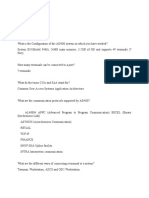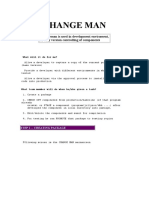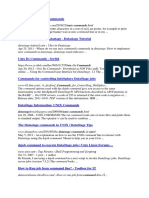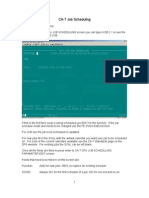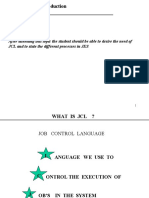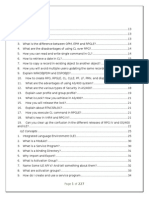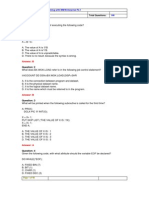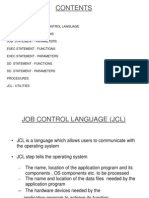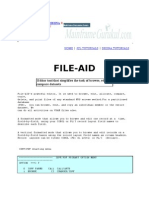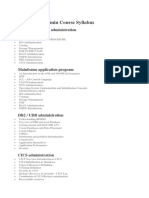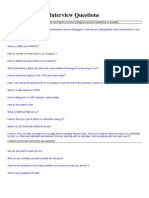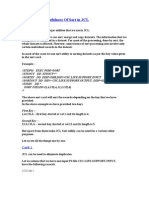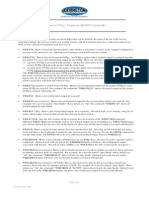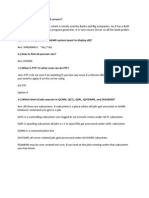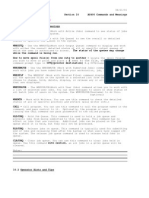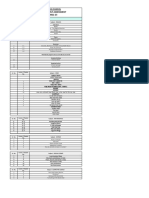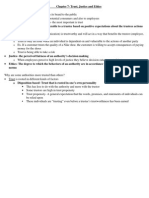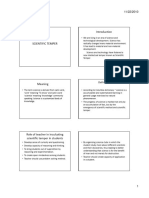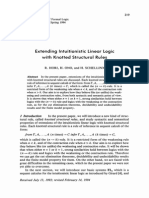Production support Job support
AS400 jobs are of below types
1.System Jobs –
a. Spooling job -> System provided print programs and it runs similar to batch job and generates spool
file for a job
2.User Jobs -
a. Interactive job -> It requires user to be always interactive/signed in till the time job runs. It doesn’t wait
in line for system resources.
b. Batch job -> Even the user who submitted the job signs-off, the job runs. It doesn’t require the user
to be signed in into the system. Whenever a batch job is submitted it goes to the place so called Job Queue
where it waits for its turn to get processed based on its priority.
c. Communication job -> If one system is making communication with another system then the
communication job starts. e.g. FTP, SNDNETF command is used for communication.
d. Auto-start job -> The jobs can be scheduled to get itself started at a specified time.
Batch job analysis –
Flow of a Batch Job is of as below -
1.SBMJOB command is run to start the batch job.
2.Goes to Job Queue and waits for its turn with status JOBQ
3.Become ACTIVE when its turns come.
4.Goes to Output Queue (OUTQ) after getting finished.
5.Moves to Print Writer (If required )
6.Prints out on Printer (If required )
Whenever job runs it create its job log. Job log contain below information
1.Contains information related to jobs.
2.Commands in the job
3.Commands in a CL program
4.Messages
1
� Some basic command -
1.Show all the active jobs in the system with command – wrkactjob
2. Job name is composed of Job Number/User/Job Name.
To know your job status use command - >WRKJOB JOB(001132/Abhinav/SA)
3. Show all the jobs for a particular user. – wrkusrjob
4. Show all the submitted jobs. – wrksbmjob
5. Hold running job – use option 3
2
�6. Release job which is on hold - use option 6
7. To know what currently is running in job
Use DSPJOBLOG and then use F10 and after that SHIFT + F6
Different job status of the Job
ACTIVE -> The job has been started.
OUTQ -> The job has completed running and has spooled file on an O/P queue.
DSC -> The job has disconnected.
JOBQ -> The job has been submitted and has gone to JOBQ.
SYSREQ -> The job has been suspended by the system request or transfer to secondary job.
FIN -> The job is finished.
END -> The job is ending as a result of ENDJOB or ENDSBS either with immediate option or with the
controlled option which ends the jobs when time expires.
EOJ ->The job is ending other than the reason like ENDJOB or ENDSBS. Reason may be SIGNOFF,
ENDGRPJOB or an exception that is not handled.
MSGW ->This status comes in batch job. System sends an error and waits for user’s reply. It keeps on
waiting as it is not interactive job but it is a batch job.
3
�Some basic question on batch job
1. Each batch job will have it's own unique QTEMP library. ll objects created in the jobs QTEMP library
are removed when the job ends.
2. A local data area is created for each job in the system, including autostart jobs, jobs started on the
system by a reader, and subsystem monitor jobs.
The system creates a local data area, which is initially filled with blanks, with a length of 1024 and type
*CHAR. When you submit a job using the SBMJOB command, the value of the submitting job's local data
area is copied into the submitted job's local data area. You can refer to your job's local data area by
specifying *LDA for the DTAARA keyword on the CHGDTAARA, RTVDTAARA, and DSPDTAARA commands
or *LDA for the substring built-in function (%SST).
a. The local data area cannot be referred to from any other job.
b. User cannot create, delete, or allocate a local data area.
c. No library is associated with the local data area.
d. User cannot change the local data area in a secondary thread.
3. What to do if job is on MSGW
If job is in MSGW status follow below steps
a) Do wrkactjob or wrkjob to reach to job
b) in front of job take option 7. It will display error msg including information such as program name line
number due to which job is in MSGW status
c) After discussion reply accordingly in Batch. 2 types of reply is required
i) C D F G
If reply G --- then the system starts the *GETIN function means the program will
start execute again. it means to ignore the error and simply go on to the next compiled machine
instruction as if no error happened
for C : It stands for Cancel. It will cancel the program execution.
for D: It will create a dump for the program.
for F: It will create a full formatted dump
ii ) C D I R
for I : It stands for Ignore means if u reply with I then the system will ignore error and start execution
from the next line.
R generally means "Retry" (such as when you have a record lock). When the message occurs, press
"Help" or "F1" to get a specific answer to a specific message
The system throw CDFG and CDIR as per the severity of the error
4. How to identify if job is in loop or not
If job is in loop and below symptoms will appears
i) CPU utilization will go up sometimes upto 100
ii) For one file rrn no will increase to larger count while there will no change in rrn no for most of the
files.
Note – 1. In order to see list of files being user kindly take option 14 (refer screenshot on next page )
2. To know file rrn no of file after option 14 press F11
4
� iii) In call stack , one one particular program ( which is running currently) particular line no will
performed again and again
Note – In order to see list of files being user kindly take option 11 (refer screenshot below )
5
�5. How to abnormally end running job
In order to end job please follow below steps –
First method
a) Do wrkactjob or wrkjob to reach to job
b) in front of job take option 5 and then press page down.
c. Now take option 41 . below fields will come
Take *immed to end job and in delay time mention 1 sec ( if user requires to end job immediately )
6
�Second method –
a) Do wrkactjob or wrkjob to reach to job
b) in front of job take option 4 and then press F4
Take *immed to end job and in delay time mention 1 sec ( if user requires to end job immediately )
6. How to change the priority of job to get this executed early
a) Do wrkactjob or wrkjob to reach to job
b) in front of job take option 5 and then press page down.
c) Take option 40 now. Change priority of the job ( 1 is highest and 9 is lowest )
7
�8
